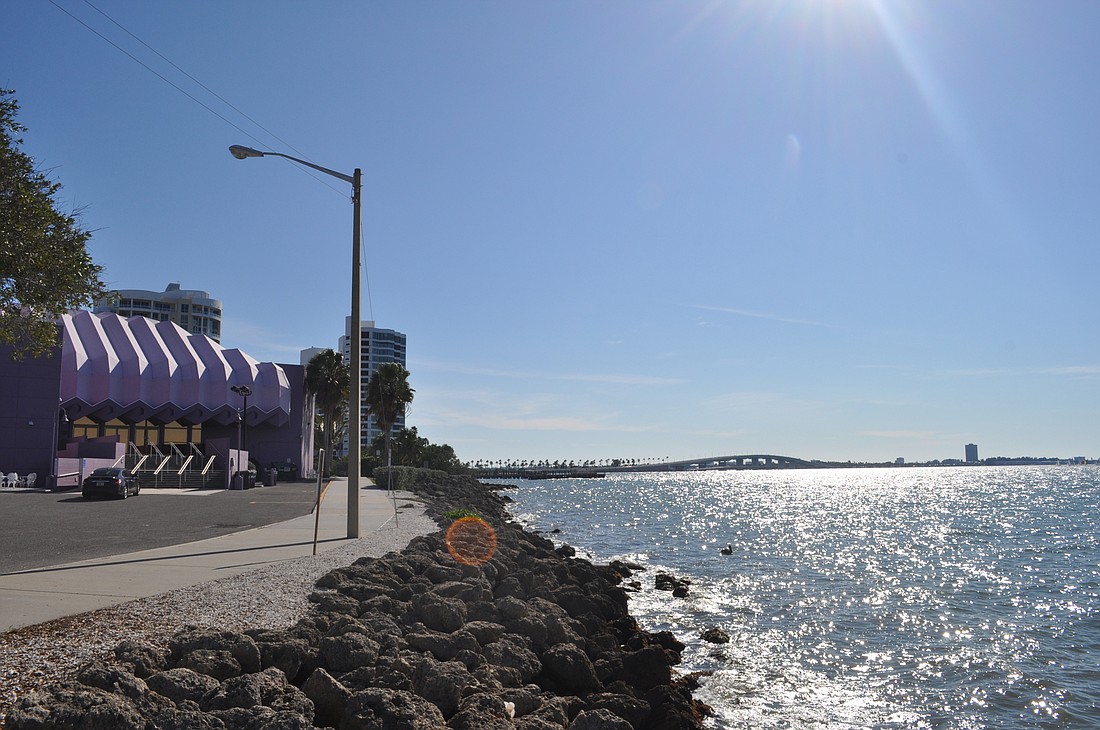- April 11, 2025
-
-
Loading

Loading

Even for city officials watching the grassroots planning effort to redevelop the bayfront, it’s hard to keep track of what, exactly, is going on.
It all started with Sarasota Bayfront 20:20, a group of stakeholder organizations representing the arts community, neighborhoods and business interests. After forming in 2013, that group drafted a series of guiding principles for developing 42 city-owned acres around the Van Wezel Performing Arts Hall.
Since then, things have gotten complicated. There’s now a Sarasota Bayfront Planning Organization, a nine-person group tasked with producing an actual master plan for the land — alongside a professional planning consultant, still to be determined.
To avoid any confusion between Bayfront 20:20 and the planning organization, the groups launched a unified brand for the effort, now called The Bay.
And in July, Bayfront 20:20 elected six representatives to serve as a steering committee to represent the broader stakeholder group, which now consists of 56 organizations.
It’s a lot of activity, largely happening outside the confines of city government. And to City Commissioner Willie Shaw, it’s a cause for concern.
The makeup of the steering committee, in particular, troubled Shaw. The group is subdivided into three categories: two neighborhood representatives, two cultural and educational representatives and two civic representatives.
The two civic representatives are Kevin Cooper, president of the Greater Sarasota Chamber of Commerce, and Bill Seider, a board member for the Community Foundation of Sarasota County and a partner with the Williams Parker law firm. Shaw worried about the influence the business community had on the committee. He also suggested the group — made up of six white men — wasn’t reflective of the diversity of interests in Sarasota.
He wasn’t alone. At the Sept. 5 City Commission meeting, Bayfront 20:20 representatives Virginia Haley and Jon Thaxton said they were also disappointed with the makeup of the board, given the demographics of the larger stakeholder group.
“Sometimes, elections don’t always get the outcomes exactly how you want them,” Thaxton said.
Haley and Thaxton said the steering committee is taking steps to incorporate more diverse voices in its work. An actual plan is still to be determined, but Bayfront 20:20 intends to establish a nominating committee for new or additional steering committee members.
And though Bayfront 20:20 takes concerns about diversity seriously, Haley also wanted to clarify the purpose of the steering committee. The planning organization is responsible for developing an actual plan. Bayfront 20:20 is still active to represent the groups with a stake in the future of the bayfront.
The steering committee will play an organizational role, formed so 56 different voices don’t need to come to a consensus to make every single decision. The group’s work will focus more on collecting information from the stakeholders and setting up future meetings, not on a blueprint for the future of the bayfront, Haley said.
“They’re not a body that’s going to be taking substantive votes on specific issues,” she said.